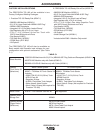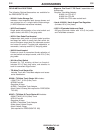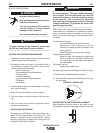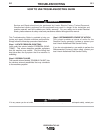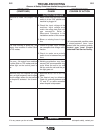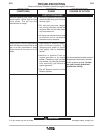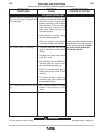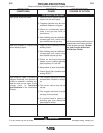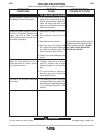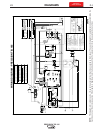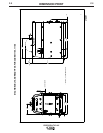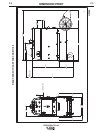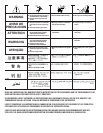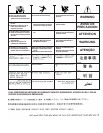
E-6
TROUBLESHOOTING
E-6
PRECISION TIG 185
Observe all Safety Guidelines detailed throughout this manual
If for any reason you do not understand the test procedures or are unable to perform the tests/repairs safely, contact your
CAUTION
PROBLEMS
(SYMPTOMS)
POSSIBLE
CAUSE
RECOMMENDED
COURSE OF ACTION
No high frequency. Machine is in the
TIG Mode and has normal output.
No gas flow when Amptrol is activat-
ed in the TIG Mode. Machine has
output - fan runs. A “Click” can be
heard indicating that the gas sole-
noid valve is operating.
When AC TIG welding, the arc is
erratic and there is a loss of “clean-
ing” of the work piece.
The end of the tungsten electrode
melts away.
1. If the machine location is in a
highly dirty environment with con-
ductive contaminants, check and
clean the spark gap with a low
pressure air stream per the main-
tenance instructions.
1. Gas supply is empty or not turned
on.
2. Flow regulator may be set too
low.
3. Gas hose may be pinched.
4. Gas flow may be blocked with
dirt. Check filter screen inside gas
inlet fitting to solenoid valve. Use
filters to prevent reoccurrence.
5. Consult your local welder/gas dis-
tributor.
1. Tungsten electrode may be too
small for process. Use a larger
diameter tungsten or a pure tung-
sten.
2. If a helium blend is used as a
shielding gas, then reduce the
percentage of helium.
1. The welding current is too high
for the electrode type and/or size.
See Electrode Amperage Ranges
in the Operation Section of this
manual.
If all recommended possible areas of
misadjustment have been checked
and the problem persists, Contact
your local Lincoln Authorized
Field Service Facility.
TIG WELDING PROBLEMS



